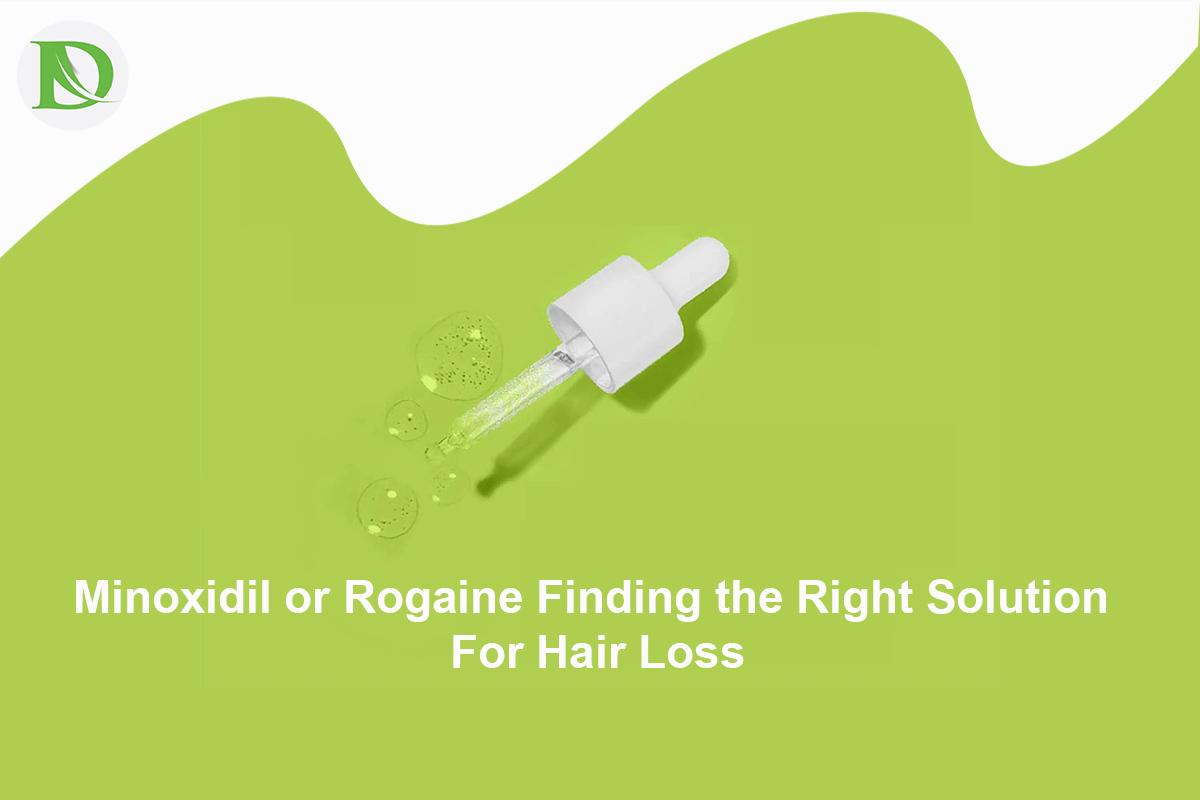Table of Contents
Hair loss is a common concern for many individuals, impacting self-esteem and confidence. Fortunately, advancements in medical science have led to the development of treatments such as minoxidil and Rogaine, offering hope for those seeking to combat hair loss. In this article, we’ll explore the differences between minoxidil and Rogaine, their effectiveness, and how to choose the right option for your needs.
Introduction to Minoxidil or Rogaine
Minoxidil or Rogaine both are popular treatments for hair loss, known for their ability to stimulate hair growth and prevent further hair loss. While they share similarities, there are also differences that individuals should be aware of when considering these options.
What is Minoxidil?
Mechanism of Action
Minoxidil works by widening blood vessels and opening potassium channels, which can lead to increased blood flow to the hair follicles. This improved blood circulation stimulates hair follicles’ growth and prolongs the hair growth cycle.
Effectiveness in Treating Hair Loss
Minoxidil has been clinically proven to be effective in treating hair loss, particularly in cases of androgenetic alopecia (male pattern baldness and female pattern hair loss). It is available over-the-counter in various formulations, including topical solutions and foams.
Understanding Rogaine
How Does Rogaine Work?
Rogaine contains the active ingredient minoxidil and functions similarly to generic minoxidil formulations. However, Rogaine is a branded product marketed specifically for hair loss treatment. It is available in various strengths and formulations, including 2% and 5% topical solutions and foams.
Comparison with Minoxidil
While Rogaine and generic minoxidil contain the same active ingredient, the difference lies in branding, price, and additional ingredients present in Rogaine formulations. Some individuals may prefer Rogaine for its reputation and perceived quality.
Pros and Cons of Minoxidil and Rogaine
Advantages of Minoxidil
- Widely available over-the-counter
- Clinically proven effectiveness in treating hair loss
- Accessible in different details to suit individual inclinations
Advantages of Rogaine
- Brand recognition and reputation
- Available in different strengths and formulations
- Some individuals may prefer Rogaine for its perceived quality and consistency
Limitations and Side Effects
- Both minoxidil and Rogaine may cause side effects such as scalp irritation, itching, and dryness.
- Not everyone responds to minoxidil treatment, and results may vary from person to person.
- Consistent, long-term use is necessary to maintain results, as discontinuation may lead to hair loss recurrence.
Choosing Between Minoxidil and Rogaine
Factors to Consider
- Cost: Rogaine may be more expensive than generic minoxidil formulations.
- Brand Preference: Some individuals may prefer Rogaine for its branding and perceived quality.
- Personal Preference: Consider factors such as formulation (solution vs. foam) and ease of application.
Tips for Using Minoxidil or Rogaine Effectively
Proper Application Techniques
- Follow the manufacturer’s instructions for application.
- Apply minoxidil or Rogaine to a clean, dry scalp.
- Use a dropper or applicator to apply the solution evenly across the affected areas.
Adherence to Treatment Regimen
- Consistency is key to achieving optimal results.
- Use minoxidil or Rogaine as directed, typically twice daily.
- Stick to the treatment regimen even if you don’t see immediate results, as hair growth may take time.
Conclusion: Minoxidil vs. Rogaine – Which is Right for You?
Ultimately, the choice between minoxidil and Rogaine depends on individual preferences, budget, and treatment goals. Both options have been clinically proven to be effective in treating hair loss, and the decision should be based on personal factors and consultation with a healthcare professional.
FAQs (Frequently Asked Questions)
Q1: Can minoxidil or Rogaine be used for all types of hair loss?
A: Minoxidil and Rogaine are primarily indicated for androgenetic alopecia (male and female pattern hair loss), but they may also be used for other types of hair loss under medical supervision.
Q2: How soon can I expect to see results with minoxidil or Rogaine?
A: Results vary from person to person, but some individuals may start to see new hair growth within a few months of consistent use.
Q3: Are there any long-term side effects associated with minoxidil or Rogaine?
A: Long-term side effects are rare, but scalp irritation, itching, and dryness may occur with continued use. Consult a healthcare professional if you experience persistent side effects.
Q4: Can minoxidil or Rogaine be used in combination with other hair loss treatments?
A: Yes, minoxidil or Rogaine can be used in conjunction with other hair loss treatments such as finasteride or hair transplant surgery for enhanced results.
Q5: What should I do if I experience adverse reactions to minoxidil or Rogaine?
A: If you experience severe scalp irritation or other adverse reactions, discontinue use and consult a healthcare professional for further guidance.



